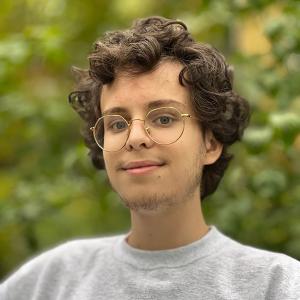Once, as a first-year, I had a conversation that went something like this:
"Bianca, I always see Mark and Andrés all around campus, no matter where I am."
"Really? Dude... I've never even seen them outside this hall."
"Wait, seriously? I walk into the library and there's Mark and Andrés. I walk down the hall to use the bathroom and there's Mark and Andrés. I walk through King to get to class and there's Mark and Andrés. I leave campus and go downtown— there's Mark and Andrés! Everywhere."
"Woah. Okay, now that you say that, there are other people I see around campus all the time. Wait… Hang on. What if…"
And so it began. As a first-year, Bianca Berger '23 started to devise a theory that everyone on campus has a group of people that they see walking around, almost exclusively, on a loop. Some people you never run into— those outside of your loop— and some people you run into all the time. The funny thing is that the loop theory applies to things you do on a regular basis, which could be explained by your schedules aligning, but also to the random, off-schedule, one-time things you do. (I had no regularly scheduled times to wander downtown. But there they were. Mark and Andrés.) Loops are cosmically laid out for us; they are not something you can decide to change.
Over the years, Bianca and I have continued to add onto and amend the Loop Theory. For example, we've noticed that your loop changes completely every semester. As a semester begins, I see all these people walking around who I never knew existed, and it stuns me how much of the student body I've still never acknowledged or shared space with. And then I get used to those faces. And then the cycle starts over.
Over the summer, I noticed that whenever I went to Azzy's (the café in the library), I would see both people I had never laid eyes on before and people I knew but hardly ever ran into. The same has stayed true this semester. Azzy's is an exception zone for me, because practically no one I see there is ever in my loop. Bianca has exception zones, too, like the library aside from Azzy's and some dining venues.
Two loops can overlap without being the same loop. (Imagine a Venn diagram. The two points of contact between two circles [or loops, if you will] are small and mathematically predictable. Stay with me here.) Bianca and I have never been in the same loop, but the whole summer semester, our paths would cross on Tuesdays and Thursdays at around 2:52pm. She made her way from a psych class in the Science Center to a dance class in Warner as I made my way from a CAS class in Peters to a bio class in the Science Center. Then, the whole fall semester, we've often run into each other in Azzy's at around 10:15am on Tuesdays and Thursdays, after each of us has finished our morning classes and is ready for a hot drink to cozy up our study sessions. Notice that these points of contact come at specific times when our schedules align. When the times of contact between two people are nonrandom, patterned, and too rare to be considered the same loop, that's overlap. (Are you seeing the Venn diagram?)
The Loop Theory acts on Oberlin's student body in public or communal settings: sidewalks, hallways, lounges, lunch lines. But it doesn't cover the interactions that you make happen. Sometimes it's the people you spend the most time with by choice who your path crosses with the least out in the world. That's what makes the Loop Theory fun: it's a mysterious conspiracy of fate, sure, but it rarely has any deeper bearing on your life experiences. See if you can notice a similar pattern unfolding in your own daily life. You might be able to learn a few more faces or gain some exciting intel on the universe in the process.


